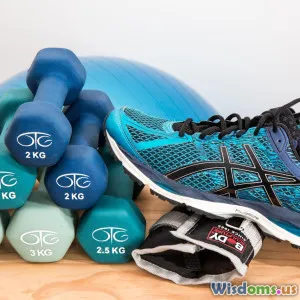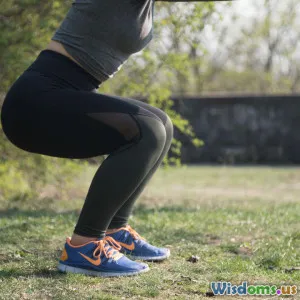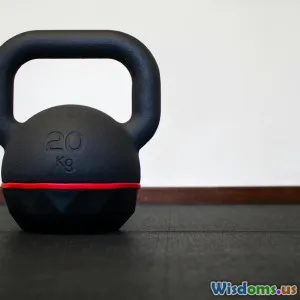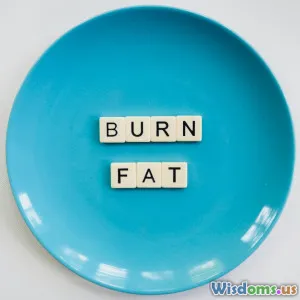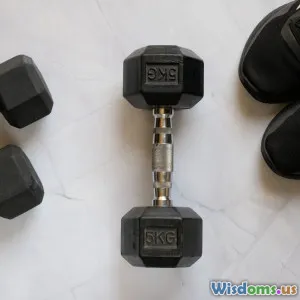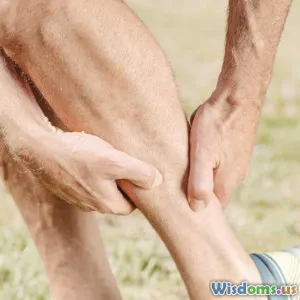
Strength Training Versus Cardio Which Is Better for a Lean Physique
9 min read Explore the battle between strength training and cardio to uncover which best sculpts a lean physique. (0 Reviews)
Strength Training Versus Cardio: Which Is Better for a Lean Physique?
Introduction
When it comes to crafting a lean, toned, and healthy physique, one glaring question often arises: should you focus more on strength training or cardio? Both have advocates and are mainstays in fitness regimens worldwide. But which exercise type truly reigns supreme for sculpting that sought-after lean look? This article dives deep into the benefits, mechanisms, and real-world impacts of both strength training and cardiovascular workouts, helping you strategically choose your path toward an optimal body composition.
Understanding a Lean Physique
Before comparing exercise types, let's clarify what a "lean physique" means. In simple terms, it is a body composition characterized by low body fat percentage coupled with a healthy amount of muscle mass, resulting in a toned, defined appearance. Achieving this balance is about reducing fat while preserving or building muscle.
Now, both strength training and cardio contribute to this goal, but in fundamentally different ways.
The Power of Strength Training
How Strength Training Builds Lean Muscle
Strength training, or resistance training, involves exercises like lifting weights, bodyweight movements (push-ups, pull-ups), or resistance band workouts. Its primary function is to stimulate muscle fibers, causing microtears followed by repair and hypertrophy—that is, muscle growth.
Metabolic Boost from Muscle Mass
One huge advantage of strength training for a lean physique is its impact on resting metabolic rate (RMR). Muscle tissue burns more calories at rest compared to fat—roughly 6 calories per pound per day versus 2 calories for fat tissue. For example, gaining even 5 pounds of muscle could increase daily caloric expenditure by about 30 calories, contributing significantly to fat loss over time.
Afterburn Effect (EPOC)
Strength workouts generate a phenomenon known as Excess Post-exercise Oxygen Consumption (EPOC), meaning your body continues to burn calories at an elevated rate after your session ends. Research in the "Journal of Strength and Conditioning Research" observes that intense resistance training can keep EPOC elevated for up to 48 hours, boosting fat oxidation.
Real-World Success Stories
Consider athletes like Olympic weightlifters and CrossFit competitors; their bodies exemplify a composition of strength combined with leanness. Records show that strength training helps reduce visceral fat—which is more harmful metabolically—while increasing functional muscle mass.
Cardiovascular Exercise: The Fat Burner
How Cardio Drives Caloric Burn
Cardio, or aerobic exercise, includes running, cycling, swimming, and similar activities elevating heart rate over sustained periods. It primarily burns calories during the session, aiding fat loss when combined with proper nutrition.
Types of Cardio and Effects on Lean Physique
- Low-Intensity Steady State (LISS): Long-duration, steady exercises (e.g., jogging). Great for endurance but lower calorie burn per minute.
- High-Intensity Interval Training (HIIT): Alternates bursts of intense activity with rest. Studies published in "Obesity Reviews" indicate HIIT can reduce fat mass efficiently while preserving muscle mass.
The Lean Muscle Dilemma with Cardio
While cardio burns calories, excessive aerobic training without strength protocols may risk muscle loss, especially if nutrition is inadequate. Some endurance athletes show extremely low body fat but with less muscle mass, resulting in a lean but less toned appearance.
Comparing Effects on Body Composition
| Aspect | Strength Training | Cardiovascular Exercise |
|---|---|---|
| Calorie Burn | Moderate during workout; high EPOC | High during workout; low EPOC |
| Muscle Mass Impact | Muscle gain and preservation | Possible muscle loss in excess |
| Fat Loss Efficiency | Effective through metabolism boost | Effective through caloric burn |
| Body Toning | Defines muscular shape | Improves overall leanness but less muscle definition |
Integrating Both: Synergistic Benefits
The choice isn’t always binary. Many fitness experts recommend a hybrid approach:
- Strength First: Building muscle provides a metabolic foundation.
- Cardio Second: Supports cardiovascular health and fat loss.
Fitness icon Jeff Nippard emphasizes this blend: "Strength training builds the canvas, cardio cleans the colors off excess fat, revealing the art underneath."
Nutritional Considerations
A lean physique is impossible without proper nutrition. Protein intake supports muscle repair; caloric deficit drives fat loss. Regardless of your exercise choice, a balanced diet aligned with your training goals will optimize results.
Conclusion: Which Is Better?
A lean physique is best achieved not by exclusively favoring strength training or cardio, but by strategically combining both. Strength training is key to building and maintaining muscle mass, increasing your metabolism, and shaping your body’s contours. Cardio complements this by increasing overall calorie expenditure and improving heart health.
Those seeking robust muscle definition with low body fat should prioritize strength training supplemented with cardio sessions tailored to their recovery and fat loss needs. Remember, individual responses vary, and the best program aligns with your preferences, consistency, and lifestyle.
Take Action: Start integrating resistance exercises into your routine today, followed up with cardio that keeps your heart healthy and fat burning efficient. Monitor your progress, adjust nutrition accordingly, and watch as your lean physique emerges with confidence.
References
- Melanson EL. "Exercise and weight loss: a systematic review." Int J Obes Relat Metab Disord. 2007.
- Boutcher SH. "High-intensity intermittent exercise and fat loss." J Obes. 2011.
- Schoenfeld BJ. "The mechanisms of muscle hypertrophy and their application to resistance training." J Strength Cond Res. 2010.
- Nippard J. "The Science of Bodybuilding." (Video series).
- Journal of Strength and Conditioning Research, 2015.
Rate the Post
User Reviews
Popular Posts










